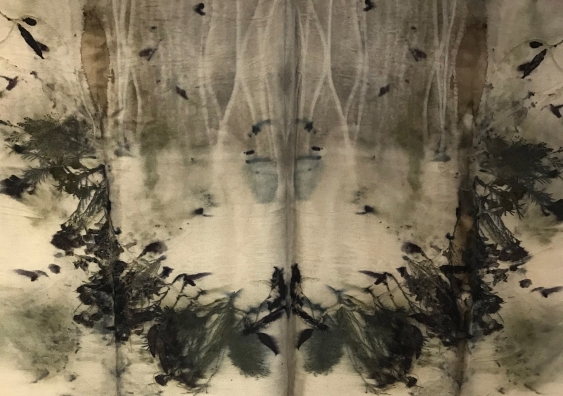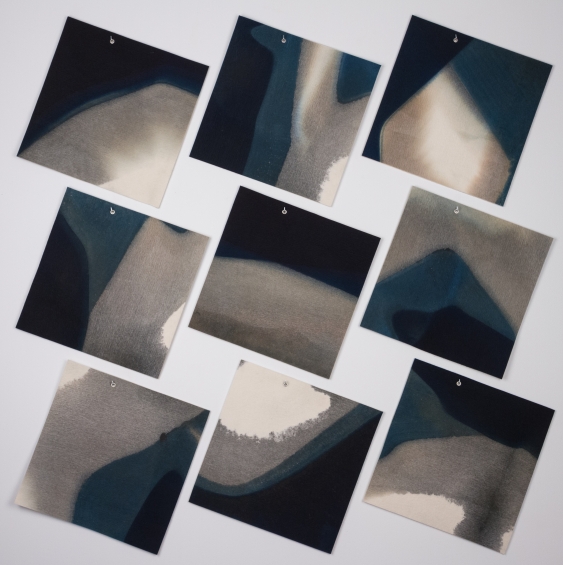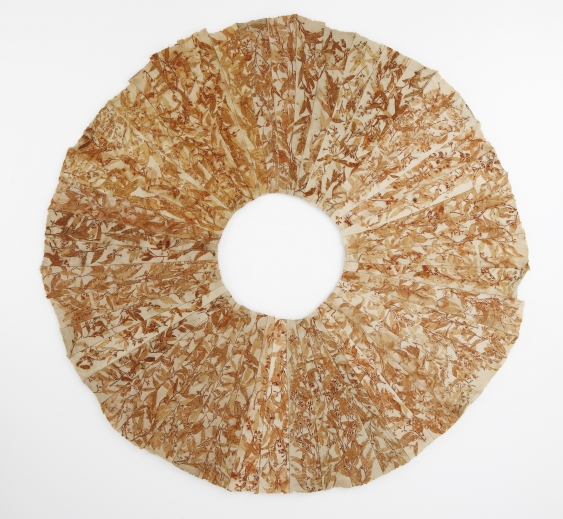UNSW Galleries exhibition explores contemporary textiles and fibre art
The new exhibition, which opened on Friday, features the work of global artists who experiment with plant dyes and earth pigments.
The new exhibition, which opened on Friday, features the work of global artists who experiment with plant dyes and earth pigments.

Karen Hall
UNSW Galleries
+61 (0)425 759 658
k.hall@unsw.edu.au
A major exhibition of contemporary textiles and fibre art by artists, designers and social enterprise groups interested in natural resources and local ecologies is being presented by UNSW Galleries.
Local Colour: experiments in nature showcases work by 21 practitioners from Australia, the United States, Canada, India, and Iceland. It opened on Friday and is running until 15 September 2018.
UNSW Galleries Director José Da Silva said the exhibition highlighted an enduring interest in natural dyes and pigments and a return to handmade and holistic ‘slow textiles’.
“Local Colour presents both traditional and new ways of thinking about colour sources and draws attention to concerns for individual and environmental wellbeing,” said Mr Da Silva.

Rowland Ricketts' Drawings 2016-2018 (detail), indigo and felt, 27 parts, overall 150 x 450cm. Courtesy of the artist.
Curator Liz Williamson, Associate Professor at UNSW Art & Design, said the exhibition demonstrated diverse expertise in growing, identifying, harvesting, collecting, processing, tending and caring for plants.
“Local Colour features practitioners who research and experiment with plant dyes and earth pigments,” said Associate Professor Williamson.
“Their dedication to creating unique colours is evidenced in their sourcing of plant materials – some are grown specifically on their own land or found locally; some are grown and processed in nearby areas; much is harvested from forests or bush areas; while others borrow, scavenge or use waste materials.

Mandy Batjula Gaykamangu, Bathi Mul (dilly bag) 2018, pandanus and kurrajong with natural dyes, 23 x 9 x 9cm, Courtesy of the artist and Milingimbi Art and Culture, Northern Territory
“These colours are extracted by dyeing, steeping, painting or printing to silk, wool, cotton, linen, paper, pandanus or leather in unique and subtly shades.”
Local Colour features intricate processes and unique colours from around the globe.
American artist Rowland Ricketts grows and processes his own indigo using centuries old methods from Japan. The leaves are harvested, dried and composted by hand to make the traditional Japanese indigo dyestuff called sukumo.
Works by the Indian social enterprise Adiv Pure Nature recycle marigold flowers from Hindu temples and to create delicate shades of gold.
Hildur Bjarnadóttir uses unique plant material found in the south of Iceland, including purple marshlocks, dog lichen, crowberry, yellow rattle, sea mayweed, meadow horsetail, water avens and autumn hawkbit.
“Australia has many very distinctive colours found in its native plants that are presented throughout the exhibition,” Associate Professor Williamson said.
“The exploratory processes devised by these artists plus the depth, ingenuity and inventiveness in realising their concepts is a highlight of the exhibition.”

Holly Story, Red Canopy 2012, karri leaf steam print on wool blanket. Courtesy of the artist
Milingimbi artists Margaret Rarru, Helen Ganalmirriwuy and Mandy Batjula use shrubs from dry eucalyptus forests to dye fibres a distinctive mul (black) and the roots of the Guninyi tree to create vivid oranges.
India Flint is a pioneer in ecologically sustainable plant dyeing techniques in Australia and her large-scale works are made with dyes sourced from Eucalyptus, Callitris, Grevillea, Chamelaucium and Casuarina.
Exhibition details
Where: UNSW Galleries, corner Street and Greens Rd, Paddington When: 28 July – 15 September 2018 For information on the associated workshop, seminar and artist talk see here.
Information, interviews and imagery: Karen Hall, k.hall@unsw.edu.au, +61 (0)425 759 658.